Designers: Annie Nguyen, Christina Qin, Melissa Ran
Artist Statement – Initial Idea and Chaotic Intention
Christina loved to watch Rhett and Link, popular internet-entertainers who played strange games online for the amusement of the audience. In one particular game, two teams hid meatballs of various painful flavors (sour, spicy, salty) in their mouths, and competed to see which team was first to identify who had what meatball. She was so inspired by this brilliant game that was never a real game, that she wanted to iterate upon the idea of “two teams compete to deduce who stole a Special Thing.”
The concept of a stealing/hiding game evoked an image that looked very chaotic: a gang of wackily dressed people, with random household things stuffed in their clothes. This was the scene we wanted our game to create. Afterwards, the introduction of an action-phrase forming mechanic followed, and the basics of Klepto-Friends were set.
At the core, the intention of our game is to be an excuse to horse around in a way we would normally be too inhibited to do. We noticed that the bizarre interpretive potential and physical challenge created by actions + modifiers was fun, so we wanted to capitalize on that feeling. When creating action cards and modifiers, we brainstormed prompts that made us laugh, imagining our friends attempting to interpret and act out the prompt. Throughout the project we aimed to make decisions in the spirit of humor: while making the packaging design, writing the instructions, etc. And as the designers, it was glorious to see playtesters hide cereal in their waistband, “praise the lord on fire” and “flip hair charmingly” for no reason at all.
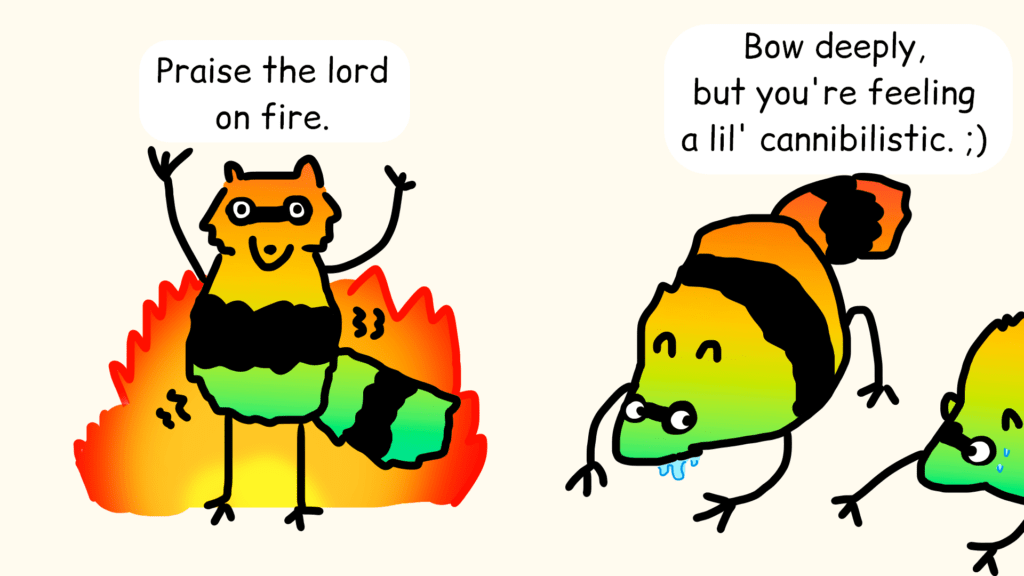
Concept Map

Ideation Process
Stealers And Guessers
Though the final game has both teams steal and guess, the initial game idea involved two opposing teams, the Stealers, and the Guessers. We explored a number of gameplay ideas, from limiting the number of hidden objects to positioning of the teams during the game such that Guessers stayed seated. Finally, this is the core interaction we built upon: Guessers strategize when making prompts for Stealers to act, while Stealers interpret those prompts and physically act them out, while concealing their objects and the true culprit.
Development of Action Cards
Initially, we had three types of action formation cards: people, action, and quantity cards. Action and Quantity cards are very unchanged, now, however the people cards (which we no longer have) would formalize which, and how many, people did a particular action. When we did our first playtest with the three of us, we found humorous and ambiguous prompts fun. What did it mean to “sit 5 times”? There are so many ways to “gently slap” a person. Playing with the three of us was very informative. We tried to make more interesting and diverse actions before coming up with the idea of action modifiers, which we found to be a success: they added the humor and surprise we were looking for. We eventually scrapped People cards, given feedback that they were not very useful.
Development of the Robbery Premise
We also discussed a variety of potential premises for the game, to encourage a sense of roleplay and appropriate mischief. We initially brainstormed some scenarios, including a more serious scenario, inspired by Russian Roulette: a “mafia vs. captives” situation, where the Stealers were captives hiding guns, but only one gun was fully loaded. We went premise-less for a while before getting feedback from Maya that suggested our rules seemed too abstract when written on paper, so we introduced the vocabulary/premise of “robbers,” “culprit,” “Loot,” and “decoys” to facilitate understanding and explanation.
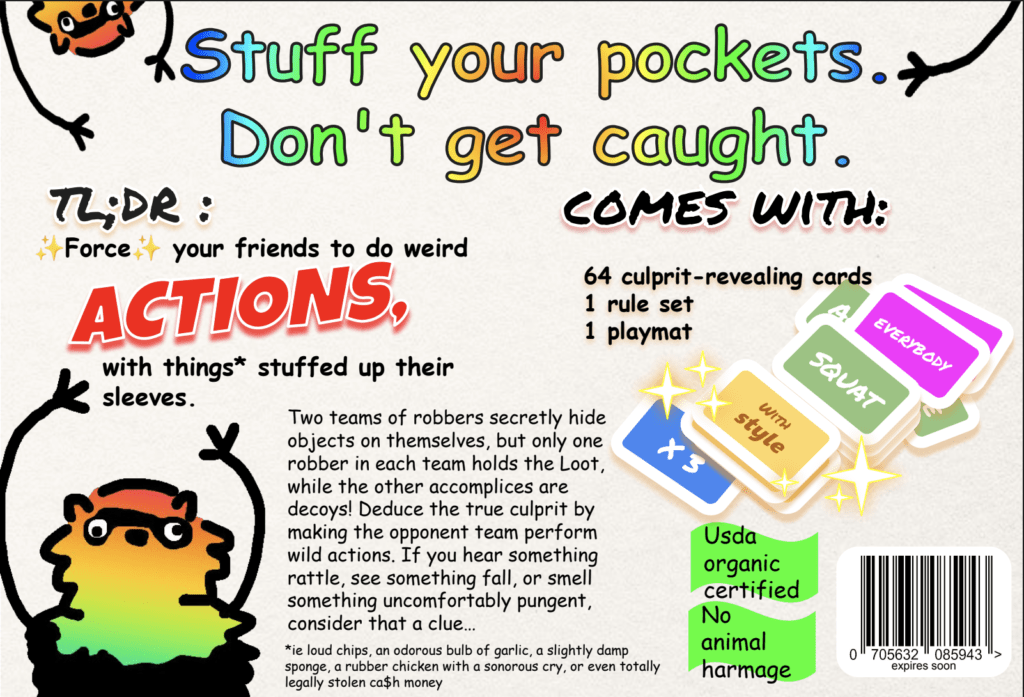
Guesser to Stealer Ratio
We initially had a minimum number of players per team in order to try to keep the guessing reasonably difficult, but not too easy. We suggested a 3:1 Stealer to Guesser ratio for players, though it could be adjusted depending on the number of people who want to play.
Five Minute Time limit
To introduce pressure and haste, we initially made the game 1 round that lasted 5 minutes. In that time, prompts would be made and acted out, and after time was up, Guessers made their final guess. To keep players involved, we explicitly allowed both teams to strategize however they wished. For the Stealers in particular, we thought that it would be best to give everyone incentive to do their part in the acting/bluffing by having everyone hide at least one object.
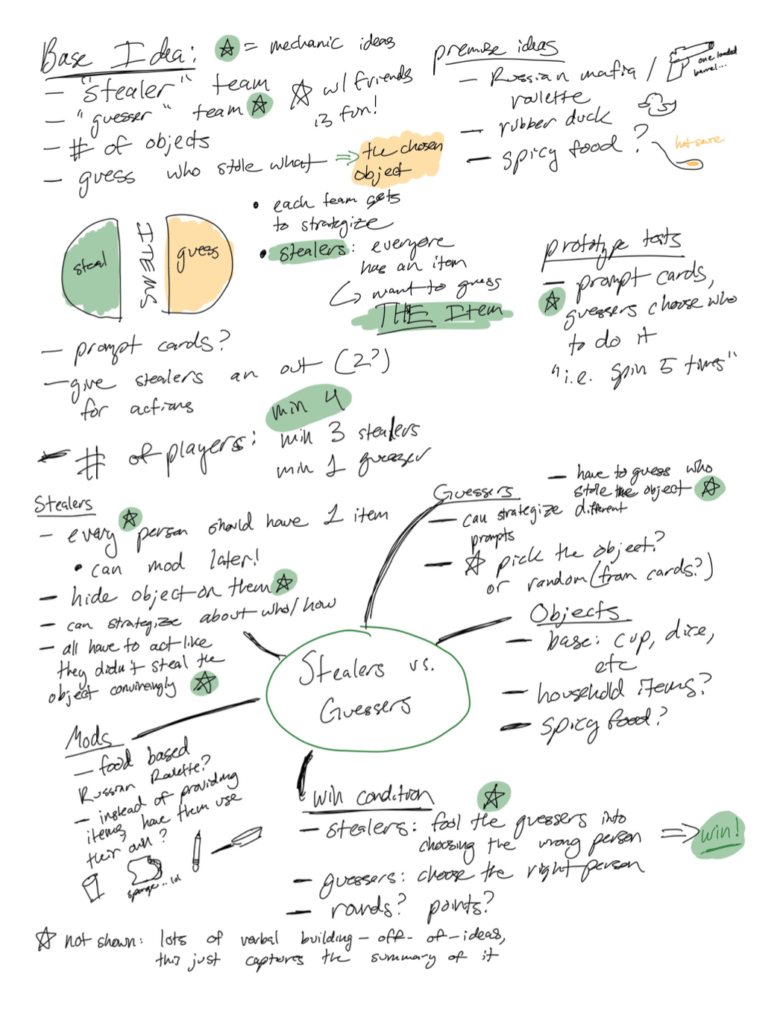
Game Rules, First Iteration
At this stage of our game, our core elements were:
- 2 Teams: Stealers (minimum 3 people) and Guessers (minimum 1 person)
- 1 round to guess, 5 minutes
- Stealers:
- Everyone needs to have one object on them, and must hide the target item
- The objects must be hidden on their person
- Are allowed to strategize about who steals what, how to bluff, etc.
- Guessers:
- Have to guess which stealer has the target item
- Can ask to do physical prompts or ask questions to deduce the culprit (prompt cards are given to help suggest ideas)
- Goal:
- If stealers fool the guessers, they win!
- If guessers find the true culprit, they win!
We provided play testers these items to fill their sad empty pockets:
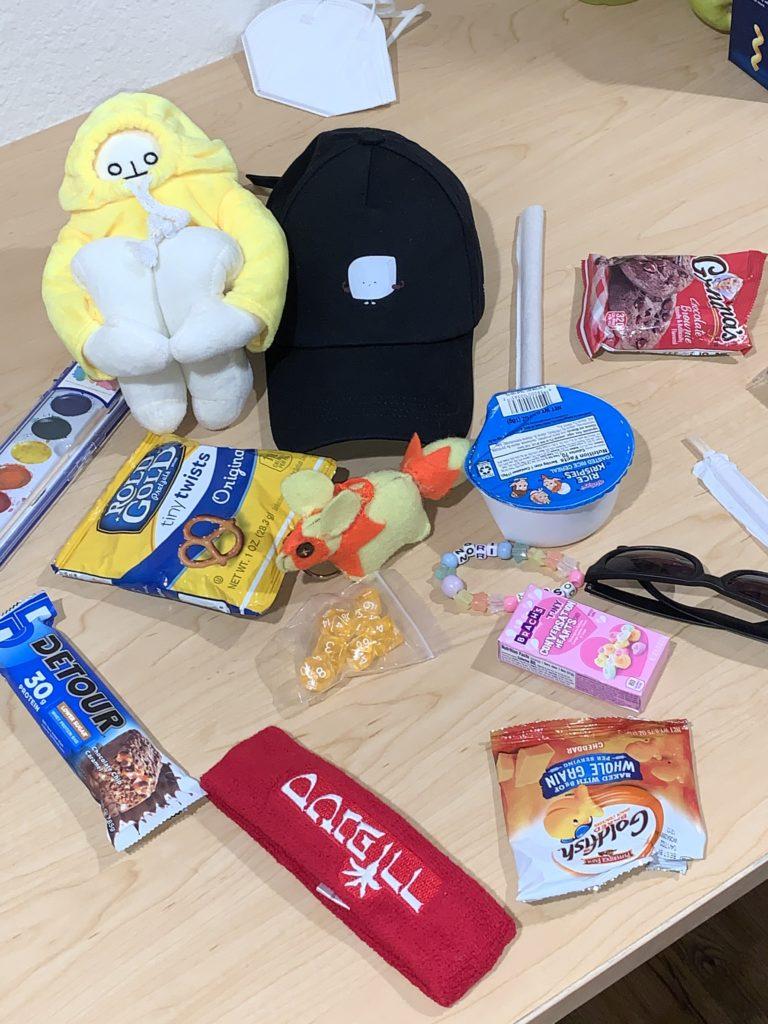
Testing and Iteration History
In the first iteration, we played with one stealer team and one guesser team. In the teams, everyone were strangers. They gave critique that some actions were not helpful, but did note that the most fun came from interpreting vague prompts. Afterwards, we made more expressive and active action modifiers and actions. However the most important thing we learned was that the Stealing team felt passive while Guessers debated their next phrase. The next iteration, we allowed both teams to guess and steal at the same time. This ended up making the game feel more active for all players, so we kept it.
In the next playthrough, our play testers were friends, making the game even more fun due to liberal interpretation of prompts. However, there was confusion on the order of when to draw cards and whether they should be discarded, which we attempted to resolve in the next iteration of the game by adding a clear ruleset and playmat, hoping some clever graphic design would remind players which cards to discard, and which to reuse. Turns out people quickly forget about the existence of supplementary printable materials, so we decided to do away with the reusable People cards, for the sake of simplicity.
We got feedback that game was too long, now that both teams were making prompts; 5 turns was too much. We reduced it to four, and eventually to three.
In this particular playtest, one player was dissatisfied with the other team refusing to do their actions with enough vigor, in an overcompetitive attempt to win the game. However, we felt that a lot of the fun came from giving teams freedom to interpret prompts, so we waited to make any change. Later in the printable materials we created after this playtest, we used our branding to set a goofy tone, in attempt to guide our players away from seriousness and towards the fun of the game: lighthearted chaos. Like Comic Sans, our game is not meant to be taken seriously.
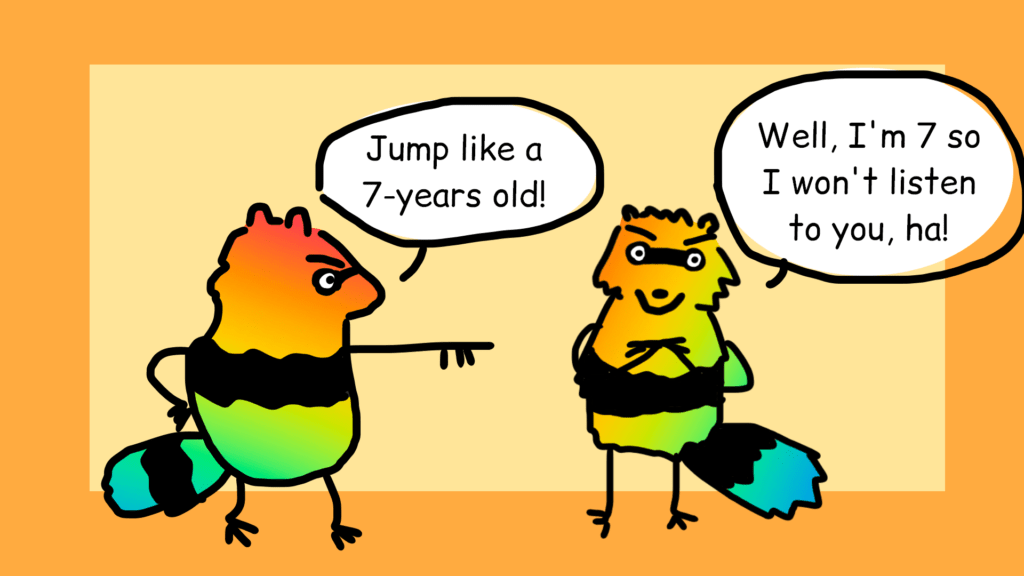
Finally, we playtested with printed cards, a more finalized ruleset, and a playmat with fellow CS247G students. We were delighted to hear abundant laughter from players as they performed strange actions and poked fun at each other. There was running. There was crawling. There was chaos. There was less confusion concerning how to draw which cards and when, but still some slight confusion regarding when to discard “People” or “Quantity” cards. To resolve this, we decided to remove “People” cards altogether from the final game, so that all cards were disposable and simple, and made (somewhat) final revisions to the rules.
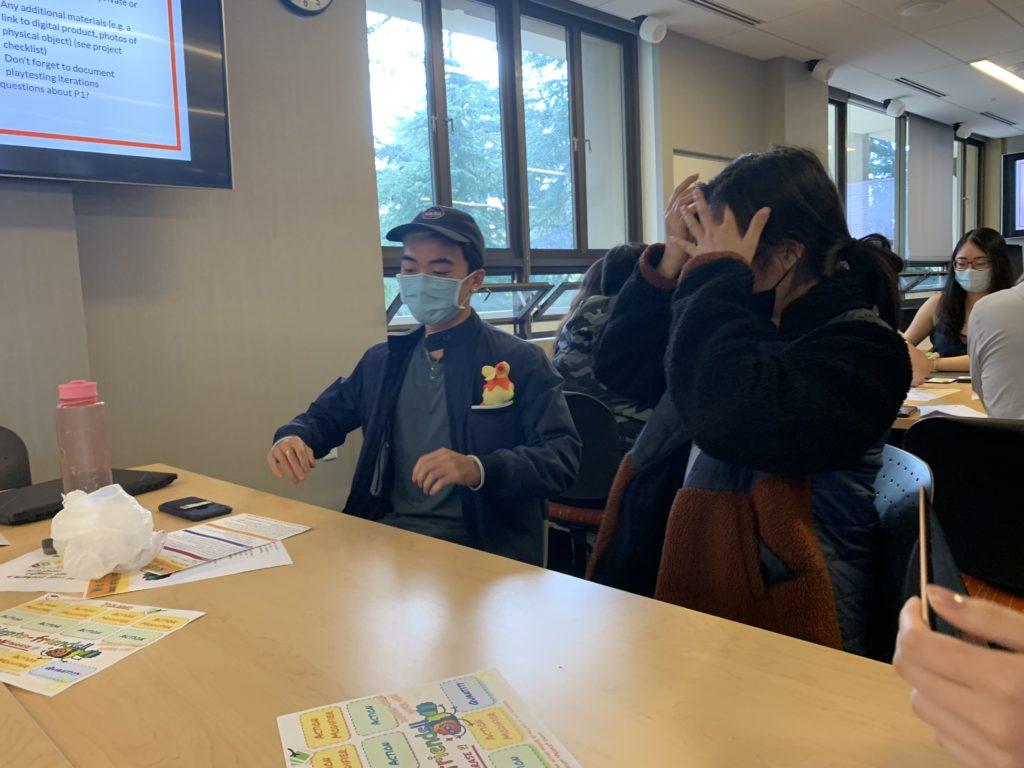
We playtested one more time during Game Night at Durand, with a group of 4 strangers, who played without the playmat altogether. It seems like revisions to our rule set are needed: we got a lot of feedback about the way it shaped the interpretation of the game rules (such as needing to mention certain cards more explicitly in the rules, and making it clear that the game can end early). Also, we determined that four rounds seemed like too long for a game, so we changed the total number of rounds to three instead. Please enjoy some beautiful moments in this play through:
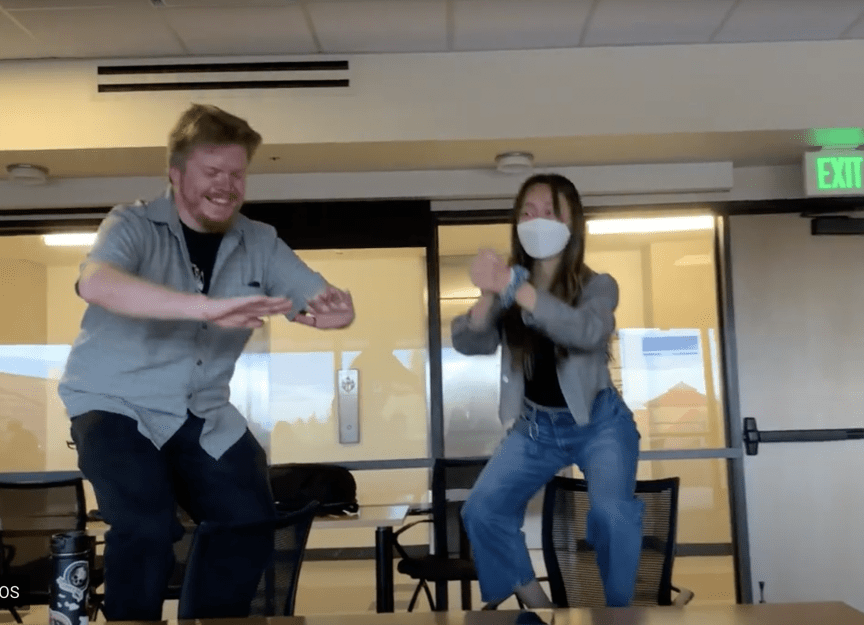

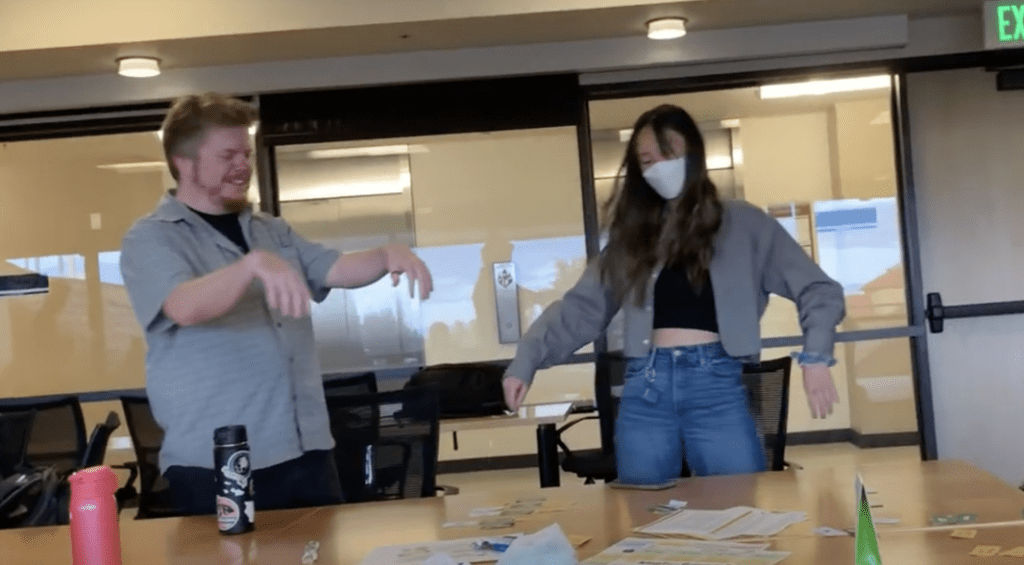
Future of the Game
In the future, if we had more time, we’d like to playtest more of the game concerning how to choose ideal items to be hidden. Throughout playtesting, players seemed to enjoy hiding noisier and larger items as they were more difficult to hide. We provided a list of suggested items from the household to hide, but would like to explore further if we can make finding items easier and more cohesive with the premise. For example, one idea was creating several prompt cards that allowed players to find items fitting a theme, such as “the noisiest items one would use to annoy their next-door neighbor”, “items to bring to a deserted island”, and “items one would bring to a friendly (and silly) robbery”.
Furthermore, we would like to explore the possibility of allowing players to pass on action cards (perhaps forcing the other team to change action phrases or even swap cards out) as power cards via further playtesting, so that players who are uncomfortable doing a certain action can pass as part of the game mechanics, rather than by honor system.
Final Game – Packaging and Printable Materials
Here are a few photos of some of the final prototype elements!
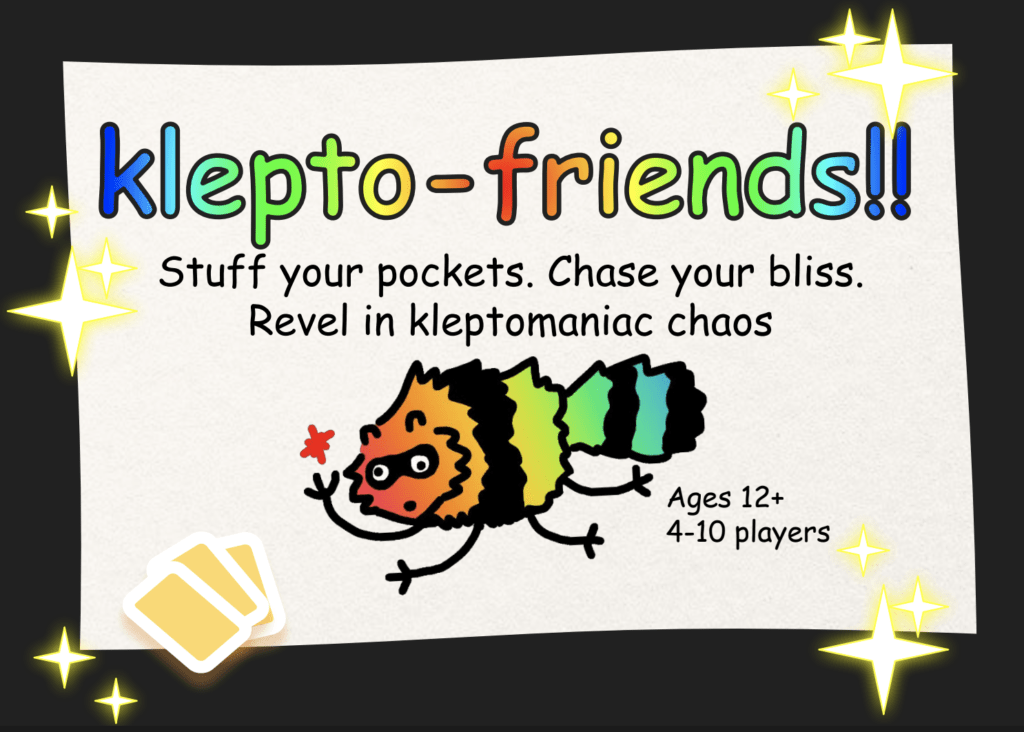
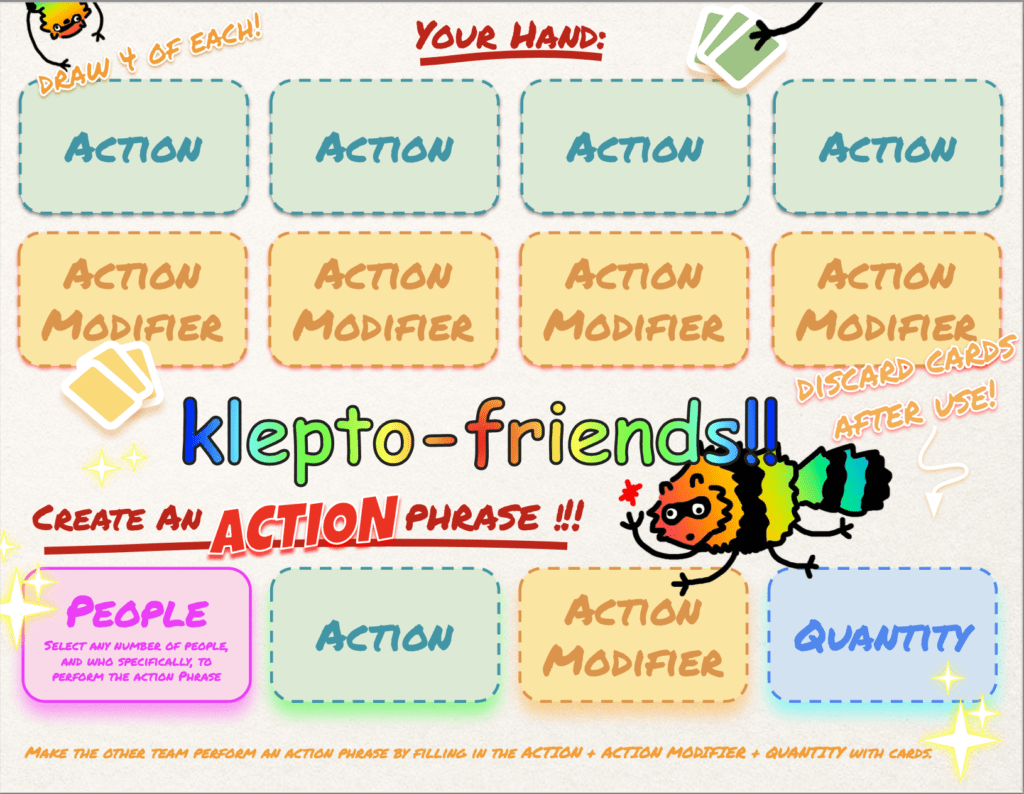
Please print the following pdf version of the game double sided, and use items available to you to play.
Box Packaging – https://drive.google.com/file/d/1CvjQQGaGaLxakKXC2q4Ll0NBsPaIYVTS/view?usp=sharing
Rules – https://drive.google.com/file/d/1XSkAiJ0TdQH-3dNEEBrFamNUTtv-YYwJ/view?usp=sharing
Playmat – https://drive.google.com/file/d/1gORLxhw7ElFaN59lxD2iz_P9Td4pcXz6/view?usp=sharing
Cards – https://drive.google.com/file/d/1ce7NTLhwov1hzMTySYsIdCAidXrRMdAg/view?usp=sharing
Playtest Video
Playtest of Klepto-friends at Durand with strangers
Formal Elements, Types of Fun, and MDA
- Players: a small to moderate sized group, with minimum of 4 players
- Procedures: secretive hoarding and hiding of objects, a limited number of turns to use action cards, a final guess at the end
- Conflict: the dilemma of following a prompt while not revealing information (for the stealers)
- Objective: to deduce who has the loot AND to conceal your loot
- Outcome: a final guess as to the identity of the culprit would be made, determining the outcomes — correct means the guessers have succeeded at guessing, and incorrect means the stealers have succeeded at deceiving.
- Resources: an eclectic, noise-making selection of objects sourced from the players’ surroundings, as well as the printed version of the game (cards, rules, playmat)
- Boundaries: wider than that of a typical card game — clothes, household items, and chairs/ tables could be used strategically in the playing of the game.
- Setting and target audience: We figured given its physicality, this would be a standing game, played among a moderately sized group of people who were friendly with each other. It seemed like a game to play among friends with whom you feel comfortable to act silly around.
- MDA vision of initial game
- Mechanics:
- Hide items in clothing
- Pick loot strategically
- Act action phrases out
- Dynamics:
- Hide items and act in a way that makes those with the loot seem like they do not have the loot, and those who do not have the loot are good decoys.
- Aesthetics:
- Comic sans and other goofy design decisions that really emphasize that this game is best played when not taken seriously. We hope the game itself fosters teamwork and laughter.
- Mechanics:
- Types of Fun
- Fellowship, Expression, and Challenge — very similar values to Charades. The idea is that “Fellowship” would be created by teamwork and mutual tomfoolery. “Expression” would be created by the ability to interpret prompts into actions and hide objects creatively. The “challenge” we hoped to create was that of not revealing the item, physically or audibly while performing actions (for the Stealing team) and for the guessing team, using many factors such as dress, style of movement, etc. to deduce the culprit.



